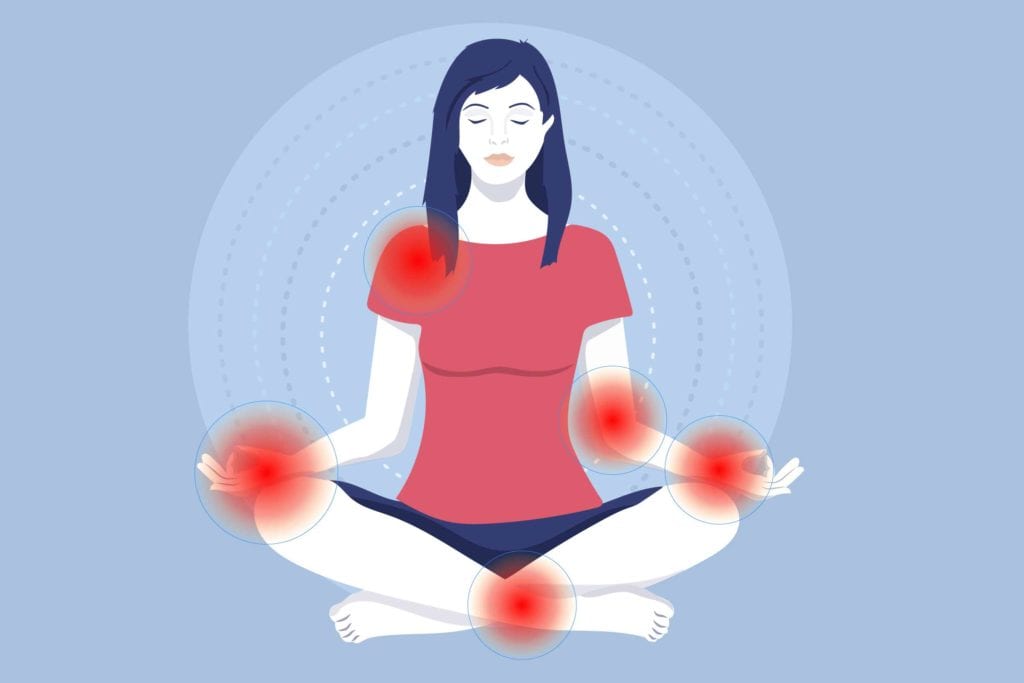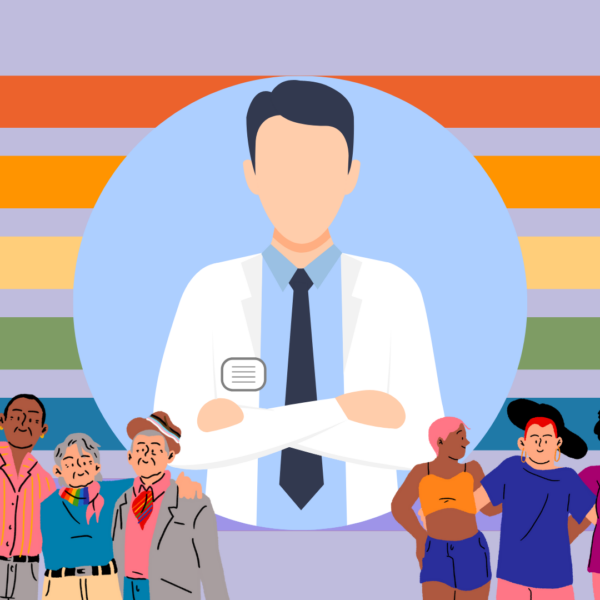

As a rheumatoid arthritis patient, I have seen numerous articles, social media posts, and research reports urging people like me to use meditation and mindfulness techniques to better cope with chronic illness. Some even claim that not only will I experience a greater sense of mental ease, but that my pain and inflammation levels will actually decrease.
Sounds great, right? So not long after my diagnosis five years ago, I decided to give it a try. What did I have to lose? I picked a popular guided meditation recording by a well-respected mindfulness researcher. Like many other guided mindfulness recordings and apps, it started with focusing first on the breath, and then quickly moved into a “body scan” where you pay attention to how each part of your body is feeling, from the top of your head down to your toes.
The Problem with Focusing on Your Body (When You Hurt All Over)
In that very first session, I quickly found out that focusing on my body, which hurt all over, made an already bad situation worse. I became so distressed that I put the whole idea aside and decided it was not for me. Since then, when I’ve seen social media posts about dealing with pain through the power of your mind, it became obvious that people like me often react the same way I did. Some comments: “You’re kidding, right? This makes light of real pain, like all those dumb RA commercials!” “Give me real pain meds so I can function.” “This kind of pain needs more than head games.”
But recently I had the good fortune to reconnect with an old friend, who happens to be a psychiatric nurse and meditation instructor. She shared with me an approach she uses with her patients that focuses on developing self-compassion. She described guiding patients through visualization exercises to recall instances of being cared for by someone else, as a way to develop a sense of self-care and comfort. The idea is to get to a place where you approach your situation less judgmentally, so you can act more like you would with a close friend who needs support when dealing with a serious problem.
Hmm, I thought — *this* I can do. And maybe there are other methods that don’t focus so much on paying attention to your painful body parts — or at least, allow you to better cope with pain or discomfort.
How I Found a Pain-Friendly Meditation Program
So, I started looking into different kinds of meditation and mindfulness programs. I focused on looking for very low-cost or free websites, apps, and recordings that are more tailored to the needs of the chronic pain community.
At first, I found material that didn’t quite hit the mark. These tended to dwell on getting in touch with how your body feels, or visualizing yourself happy and pain-free. But I persevered, and ultimately found some useful tools (more on those later).
After about a month of initial effort, I overcame some of my resistance to focusing on painful body symptoms when I learned that pain comes in two forms: Primary (caused by the physical illness or injury) and secondary (how your brain interprets the pain).
Meditation for Managing Secondary Pain
Secondary pain is still real pain, and it is not all bad; it’s a byproduct of the natural human reaction to analyze the situation so you can avoid it in the future. But, over time, doing so can amplify the pain experience as you dwell on distressing thoughts like “This is really painful; how will I cope if it gets worse?” Mindfulness and meditation can give you a break from this cycle, allowing you get off the thought train, even if briefly, to soothe and even “rewire” yourself in a way that turns down the volume on your pain. For me, this is a work in process, but I can say that at least when I am in a relaxed, meditative state, my pain signals are dulled. Learn more in this Pyschology Today article.
Over time, I have found that regular meditation helps me to cope not just with my illness, but also with other life stresses. The knowledge that I had the power to give myself a break that was free of judgment and full of compassion provided great relief and sense of control at times when bad things were happening. And, I found it useful at times to deal with sleeplessness, allowing me to step outside the stream of thoughts in my head and let the relaxation response kick in.
Before we get into the list, please keep in mind that these techniques are best used as add-ons to your current medication and treatment regimen — not as a replacement. People with serious diseases, in my opinion, need serious medical treatment.
Free or Low-Cost Meditation Programs
Here are some free or low-cost resources I found in the process of getting started that you might like to try. If one thing doesn’t work for you, I urge you to keep trying, perhaps something else will:
Breath awareness meditation. This free 11-minute audio segment on mindful.org is good for beginners and experienced meditators alike. While the recording guides you to relax various parts of your body, you don’t have to linger on them excessively. The focus is mainly on paying attention to the rhythm of your breath, and noticing your thoughts without engaging in them. It’s a quick way to sidestep what’s ailing you, exercise your relaxation response, and end on a note of gratitude.
The Mindful Awareness Research Center at UCLA has numerous free guided audio tracks you can listen to online, plus online classes for those wanting a deeper dive. The Meditation for Working with Difficulties provides a gentle way to acknowledge difficult emotions or pain in the body while also learning to direct attention to other more positive sensations.
Self-compassion meditation. Kristin Neff, PhD, is a widely recognized researcher and author on the topic of mindful self-compassion. She is featured in TED Talks and other videos on YouTube, and has a website with multiple free guided meditations that focus on self-compassion. Her approach is easy to try, and for me, provides great benefit. Key for me has been replacing the isolating “poor me” script (which is easy to fall into) with recognizing that suffering is a common feature of being human that deserves compassion.
Meditation apps for mobile devices. I find many apps a bit over-engineered for my taste, with all their buttons, options, and notifications. And if you’re not careful, you can get charged after a short free trial. Many are free but give options to buy premium content while using the app. For example, the Headspace app has a series of 30 sessions on pain management that you can buy after trying the first session for free. Though apps are not my first choice, many users find benefit in using them. They certainly can be convenient to use on the go, good for tracking your progress, and nudge you to stay at it. If you like that sort of thing, give them a try.
Acceptance and Commitment Therapy (ACT) and Cognitive Behavioral Therapy (CBT) are two related types of psychotherapy that incorporate mindfulness to help you accept your situation and/or change your behavior to improve it. I haven’t tried these techniques, but they get good reviews in the medical literature. Psychology Today provides a brief overview and a directory to find a therapist in your location; self-help books on ACT also are available through online and local book retailers. If you’re looking to use meditation and mindfulness as a springboard to make concrete changes that will help you live better despite chronic pain, these therapies are worth checking into.
Of course, these are just the tip of the proverbial iceberg. There are many, many resources out there, from online courses to real-world meditation groups. And of course, the beauty of meditation is that once you get started, you can keep going without anything but yourself, a few moments, and a comfortable place to sit or lie down.
Keep Reading
- Occupational Therapists’ 22 Tips for Making Life with Arthritis a Little Easier
- Self-Care Practices for Arthritis You Should Give a Try
- Got Painsomnia? These 9 Patient-Tested Tips May Help You Sleep Well Again
Get Involved with Research on Meditation
If you would like to help contribute to knowledge about effectiveness of mindfulness techniques in dealing with arthritis and related conditions, consider participating in the Healthy Mind, Healthy You research study. CreakyJoints will be recruiting patients to participate in this study soon; see here for details.
If you enjoyed reading this article, you’ll love what our video has to offer.





